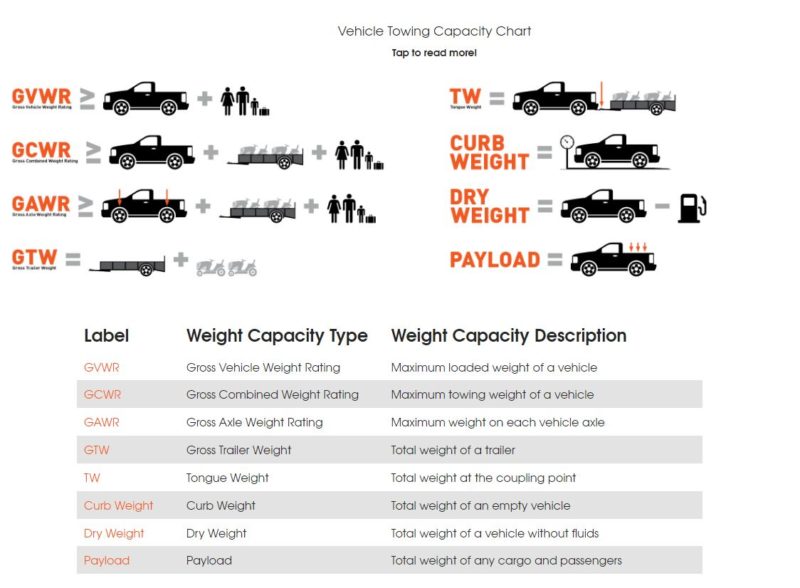On May 22, 2015, Rand Fishkin, founder of Moz, published a video titled, “Why Good Content Needs to Die.”
In that video, Rand argued that the publishing web had fundamentally changed. That merely regurgitating content wasn’t enough to win the SERP war anymore. That the minimum viable strategy for ranking #1 was to be at least as good as any other result in the Top 10.
Even better, Rand said, was to 10x the competition. Just pulverize ‘em. Create content that was mind-bogglingly better. That’s what he wanted for Moz. “If I don’t think I can do that, then I’m not going to try and rank for those keywords,” he said. “I’m just not going to pursue it. I’m going to pursue content in areas where I believe I can create something 10 times better than the best result out there.”
Today, “10X Content” has been adopted in the SEO lexicon. You’ve probably heard the term before. And now you know where it came from.
And well, I’ve been inspired. So I’ve coined a bunch of my own “10-” terms for alternative blogging strategies.
As much as I love the idea of 10x content, it’s just one tool in your arsenal as a blogger. When Indiana Jones loses his pistol, he still has his whip.
So do we bloggers have other methods to write top-tier content besides 10x-ing the competition?
The 10X Method: Rise to the Top
The 10X method is about quality over quantity.
The 10X Method is commonly misunderstood. Many people equate 10x to “skyscrapering,” which is a different tactic entirely.
10x content isn’t about length. It’s about overall quality. It’s about giving the Reader the best possible solution to their problem. It’s about:
- The UX (site navigation, visuals, font, etc.)
- The uniqueness and relevancy of the content
- The depth and analysis of the content
- The supporting visuals, video and pictures
It’s a beautiful, wonderful idea. And it’s more achievable than you think! Sometimes, just adding a decision-tree infographic, sticky table of contents, and custom video to your post can elevate it above the competition.
10x content, as Rand explains, isn’t the domain of Big Business or SME. It’s open to anyone who’s willing to put in the work.
But … 10x content is high risk. If you’re targeting a super high-value search query, you can easily spend 40+ hours on a 10x blog post. What if you miss the mark? What if you accidentally target a search query that has no real traffic? What if you just … flub it?
There’s a big opportunity cost gamble. Let’s say I can write five Pretty Good posts in the same time it takes me to write a single 10X Post. Of those five Pretty Good posts, two of them take off. Eight months later, I go back to those articles and 10x them! – but I ignore the other 3. Is that, maybe, a better strategy than 10X-ing everything?
Or what if you’re a new blogger … and you honestly don’t know how to write 10x content? What if you’re just trying to put out Pretty Good content?
10x content is rarely outsourceable. You won’t get it on Fiverr on Upwork. It’s something that comes from either industry experts or multi-level content creation teams.
I don’t disagree with Rand (far from it). I love 10x content!But I don’t think 10x content is the only solution for generating Page 1 content. It should be our weapon of choice, but not our only choice.
- Example: How Much Can My Vehicle Tow?
- Link to page

The 10% Method (Or How to Survive a Zombie Apocalypse)
Everyone knows how to survive a brain-eating zombie apocalypse: Just be a little bit faster than the person next to you.
The 10% Method is a blogging strategy to eke out the top spot. You just need to be 10% better than the next guy!
- A common 10% method is called “skyscrapering.” Skyscrapering is the practice of out-writing the competition by sheer article volume. If someone else writes, “17 Nifty Ideas for AI-Generated Content,” you write, “23 Crazy Ways a Robot Can Write For You – For FREE!”
- Another 10% method is aggregation or curation. You survey the Top 10 results, curate and aggregate the best tips and tricks, add some of your own unique information, and publish your own article.
Most 10% methods are economically attractive. They might not get to Number One every time, but you’ll wind up on the first page of results.
But the strengths of the 10% methods are also their weaknesses. They are scalable and outsourceable – which means somebody else is doing just that! Your claim to King of the Hill is tenuous at best.
I’ve used 10% strategies. You can’t be a prolific publisher without sometimes resorting to skyscrapering, curation, or aggregation. If you don’t have E-A-T, then sometimes 10x content just isn’t available to you.
I think of 10% methods as stepping stones. If a 10% Post winds up on the First Page of Google, then I’ll have to re-edit and improve to a 10X post.
- Example: Search Query – Best Home Cleaning Tips

The 10! Method: A Lesson from the Bees
The 10! Method is raw and crude: Instead of writing one Pretty Good or 10X post, just write 10 crummy ones.
It’s how bees defeat bears. Most of their stings are useless. Hundreds of bees will die. But a few get through, stinging the bear on the snout or close to the ears. Eventually, the bear will leave. The hive wins!
Don’t laugh. For many years, this was arguably the most practiced technique on this list! In the heyday of Google Adsense, black hat SEO web developers would build these 10-30 page micro sites with absolute garbage for content. One of these micro websites might only earn $0.75 a day from random Adsense clicks.
But if you can spew out three websites a week, 52 weeks a year … you see how the math works out.
Those days of churn n’ burn SEO have mostly come to a close. Today, if you’re not first [page], you’re last. Most of the traffic goes to the top 1-5 results in the search pages. Positions 5-10 split the leftovers, and everyone else licks for crumbs. Google just isn’t rewarding small micro niche sites (especially ones with spun content and spammy backlinks).
Today, the 10! Method is often used for Amazon blogs and product review websites. They just churn out a tremendous amount of “meh” content. And while Google algorithm updates have depressed their performance, 10! articles are still a part of the blogosphere – for now.
I don’t use the 10! Method. I’ve never had any luck outsourcing content for $10 an article. You get what you pay for. Google trusts E-A-T, not word count.
The /10 Method: Divide And Conquer!
The /10 Method is all about specificity. Rather than writing an article about “The Best 10 Laptops of 2022,” you write about “The 10 Best Business-Grade Laptops for Working on an Airplane – for Under $1,000!
You get granular. You go nitty-gritty. You slice and dice the topic into a super-specific search query that no one else is writing about! Through lack of competition, you win!
With the /10 Method, it’s easy to divide a single “master” post into 5, 10, or even 50 sub-posts.
There’s a big tradeoff, of course. You’ve lost the chance to rank No. 1 for the main search query. But … if you can rank No. 1 for many associated search queries … then maybe you can do pretty well!
(And if you never stood the chance to rank higher than No. 12 for the main search query anyway, then you actually came out ahead!)
This method is closely related to the concept of long-tail keywords: Target the low-volume, low-competition keywords for which you can quickly, easily write top-ranking content. This is how most bloggers begin their content strategies.
The /10 Method is a good one – for beginner bloggers and smaller niche sites. It’s not a viable strategy for targeting high-volume, high-competition search queries.
The $10 Method: Pay to Play
As you all know, the first result on many competitive search queries isn’t an organic result: It’s a paid ad!
If you can’t beat ‘em, pay ‘em off!
As you all know, SEO is all about the long game. Google is like Elizabeth in Pride and Prejudice, and we’re Mr. Darcy. It’s gonna take some work.
If you/a business doesn’t want to put in that work – or if you’re running a seasonal sale that needs results NOW – then it’s PPC campaigns to the rescue!
There’s nothing wrong with paying for traffic. Ads are a great way to immediately get your content in front of a bazillion eyeballs.
Just don’t play tricks with the audience. Ads are good for sales funnels and calls to action. They’re not good for content promotion.
If you wrote an article about “The Best Way To Wash Your Dog,” and your content stinks (do you even have a video??), then no amount of advertising will compensate for that.
I’ve never used the $10 Method – not yet, anyway. If I was running a sales campaign, I would certainly consider it. The ROI on pay-per-click campaigns can be sky high. If I can spend $1,000 and make $2,000, why wouldn’t I?
- Example: Search Query – Best Laptops 2022

Do you have any other 10 methods to add? 10^, 10&, 10*? What would these methods mean to you?
I thought about the 10# method, for instance. Which was how some bloggers leverage the in-your-face exposure of social media (hence the hashtag) to drive traffic to their sites. Options abound!
